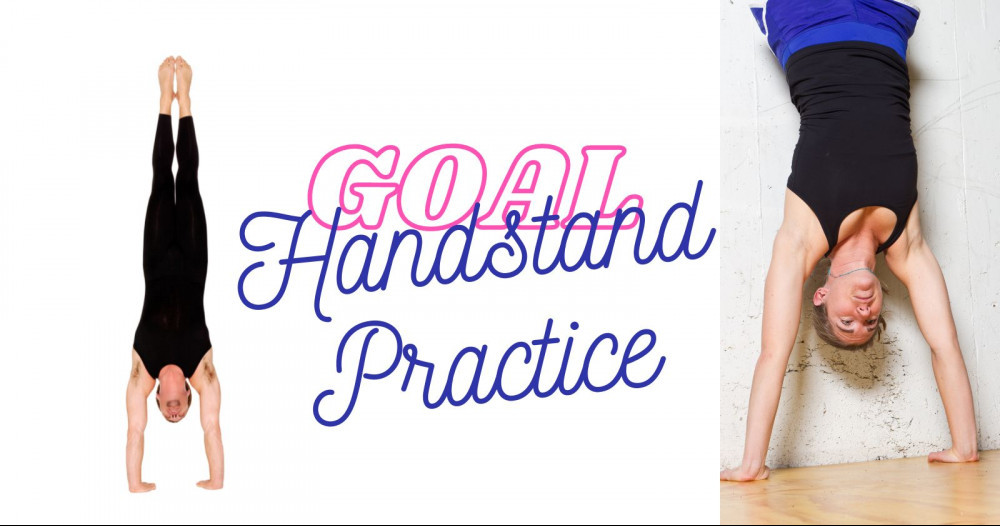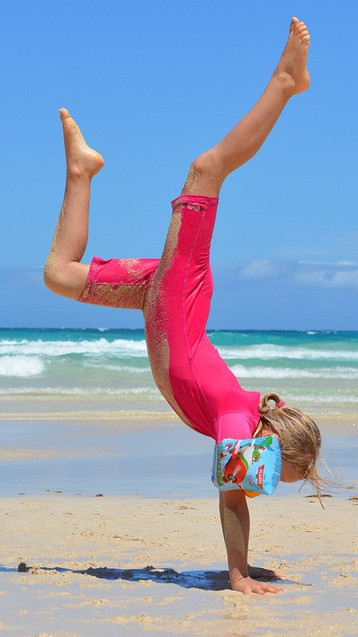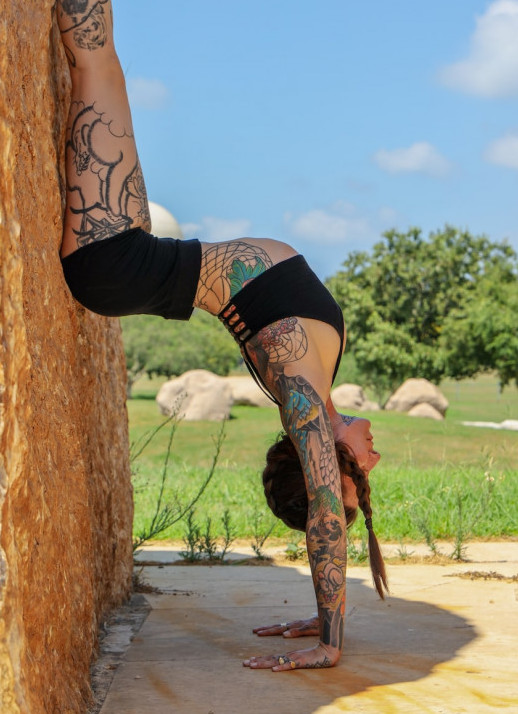Did you know that handstands are very beneficial for dancers so in this post I would like to discuss handstand practice, how to do them properly, and the benefits of doing handstands with your dancers.

As Dancers, Why Should We Get Handstand Practice?
Doing handstands is an extremely underrated exercise, and I think it is because people either can’t do them or are scared of them. As a dancer doing handstands can improve your all-over strength and your balancing skills. They even help with your pirouettes.
But there are actually many benefits to doing handstands. Handstand practice has great benefits for dancers, and even adults can practice them to reap the health benefits.
How To Train And Practice Handstands
Well, first of all, you need a strong core, or you will feel like a piece of spaghetti when you are upside down. The fastest way to do this is by doing planks and holding them for as long as you can.
Donkey kicks help you to get the feeling of kicking your legs up into the air. Place your hands on the floor and try to kick your bottom with your feet.
If you are nervous the best way to do a handstand is to face a wall and climb up the wall backward with your feet. This is what I always do with my beginners to give them the confidence to go upside down.
So, What Are The Benefits Of Handstand Practice For Everyone?
Balance:
If you’ve ever tried to do a handstand, you will know that besides needing to be strong to do them, you’ll also need to have some balancing skills if you want to be able to hold yourself up.
Freestanding handstands, especially, require you to be able to have full control over your muscles and to constantly make small ‘inner’ adjustments to avoid falling.
Practicing freestanding handstands or doing handstands against a wall and trying to take your feet off the wall for as long as possible will help increase your balancing abilities like no other exercise in the world can.
Strength:
If you want to be able to hold yourself upside down, you will need strength in your shoulders, arms, upper back and core.
If you are new to handstands you can expect your muscles to start to shake after just a few seconds of holding a handstand.
So in order to build up your strength, it is a good idea to do your handstand up the wall for three sets of 5 to 10 seconds, then work up to holding them for a minute or two at a time. If you practice this often, your upper body strength will skyrocket.
Who needs tummy exercises if you can hold a handstand? If you can achieve this your core muscles will be super strong.
Other Health Benefits:
Since handstands are technically a weight-bearing exercise, they can help strengthen your bones, making you less prone to osteoporosis. It is actually good for you to put weight on your wrists.
Handstands are also beneficial for your spine and help aid bone health in your shoulders and arms.
The upside-down nature of a handstand can increase circulation to your upper body, and relieve pressure on your feet and legs.
Your diaphragm will also get a good stretch at the same time, which in turn can increase blood flow to your lungs.
Boost Your Mood:
Doing handstands may also make you feel happier, since the blood flow to your brain has an energizing and calming effect, especially when you’re feeling really stressed out.
Another way handstands can help your mood is by reducing the production of the stress hormone, cortisol, which can not only de-stress you in the short term but could also help relieve feelings of sadness and anxiety.
Handstand Technique For Acro Dancers
For acro dancers, handstands are one of the basic skills that they need to master before progressing into harder tricks.
Fingers:
Make sure the fingers are spread out well on the floor as this gives you a wider base for balancing on. Feel like you are pushing into the floor by engaging your fingers. Fingers should face forward.
Weight Placement:
Make sure to press into the floor with the pads of the fingers and make sure that the body weight is in the ball of the hand or volar plate.
Shoulders:
The shoulders must remain engaged with the scapula in place, to help with stability, alignment, and balance.
Core:
The core must be engaged and students need to visualize closing their rib cage while lengthening through the spine. To me the core is the most important thing when it comes to maintaining a well-held handstand. If the core is not strong, work in some core work before you attempt to balance a handstand.
Stacking:
When doing a handstand you need to understand the concept of stacking. Hands must be under the shoulders and then hands, elbows, shoulders, hips, and feet should stack in a straight line for optimal alignment.
When walking the handstand, the back can arc with the legs slightly behind the dancer’s head.
I hope that reading this post has inspired you to try to do a handstand. Please feel free to comment below if you have any questions.


I have never practiced a handstand in my life, it seems that I missed a lot. I appreciate these kind of posts and I like to read it because it’s explained the benefits of practicing handstand to our body and brain. I wish I could start doing it from younger age. Very well written.
NedaS
I am surprised you never tried to handstand when you were a child. Most children I know do them at play time at school. Thanks for stopping by.
Hi,
I just came across this article about the importance of handstands for dancers and building core strength, and I have to say, I was absolutely fascinated by it. The article provided a wealth of information about the benefits of handstands for dancers, from improving balance and alignment to increasing strength and flexibility.
One thing that stood out to me was the emphasis on building core strength through handstand practice. As someone who has always struggled with weak core muscles, I wish that I had done something about it when I was younger.
I was impressed with the variety of handstand progressions and exercises provided in the article, from practising against a wall to working on press handstands and one-arm handstands. Each exercise was accompanied by clear instructions and tips for proper form, making it easy for readers who want to, to incorporate these practices into their own training.
Whether you’re a seasoned dancer or just starting out, or someone who wants to build their core strength, the benefits of handstand practice are undeniable. Thank you for providing such a fascinating and informative article!
Thank you for stopping by Julia and so happy you found this article beneficial.
I just came across your article and I am in shock. I had no idea. I used to do handstands as a kid all the time but my parents would tell me to stop because it was bad for me. lol They were wrong! I want to be able to do handstands again someday now that I know the benefits of doing them. I love dancing to and never would have thought of putting the two together. I learned a lot. Thank you!
Another of those old wives’ tales put to rest.
Thank you for sharing this insightful post about the benefits of handstand practice for dancers. As a language model, I don’t have a physical body, but I can understand the importance of strength and balance for dancers and athletes alike.
I appreciate the detailed instructions on how to train and practice handstands, including the emphasis on building core strength and balancing skills. The benefits of handstand practice, including increased bone density and improved circulation, are also compelling reasons to incorporate this exercise into one’s routine.